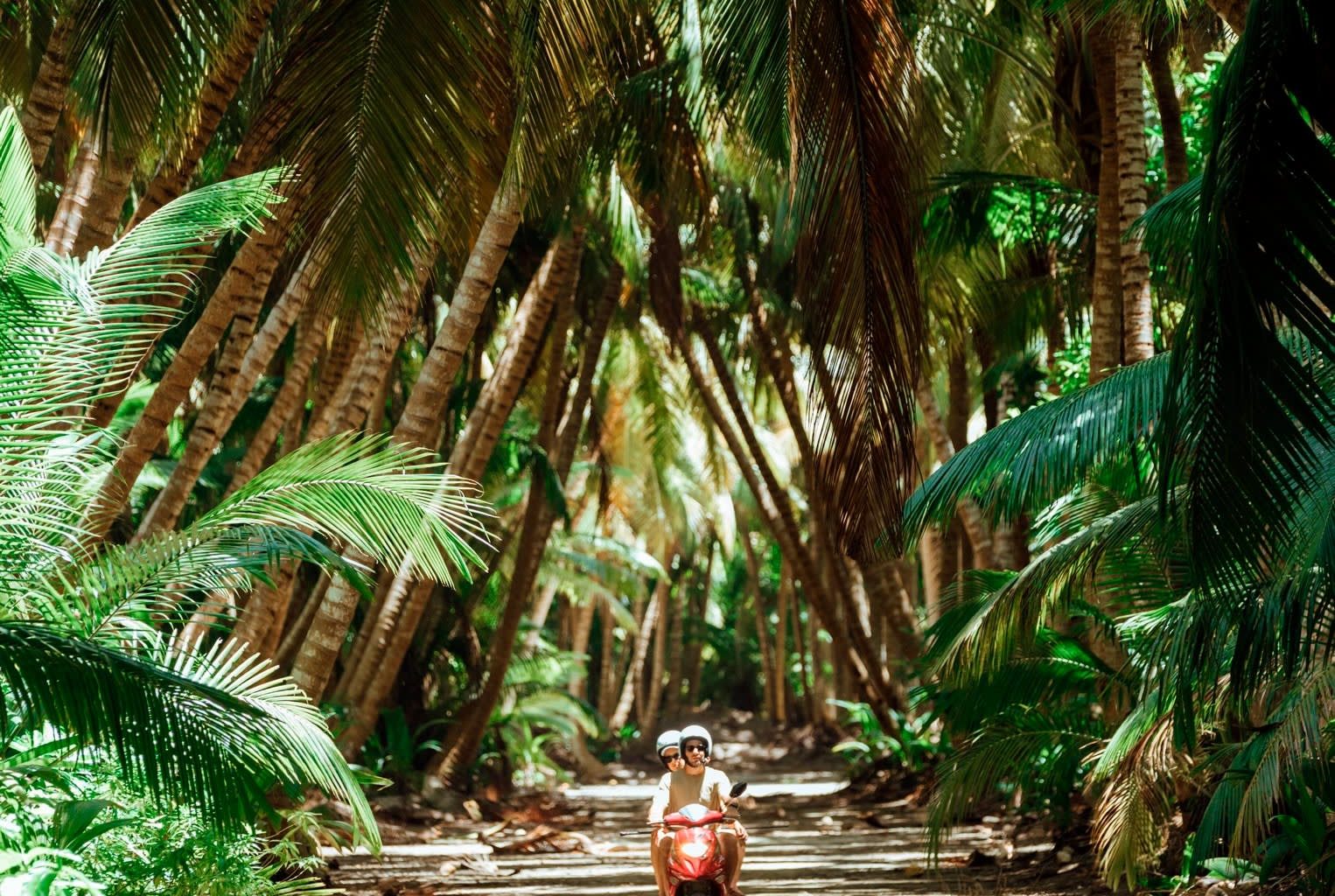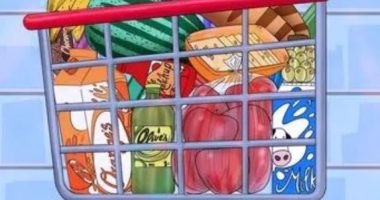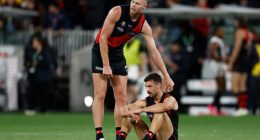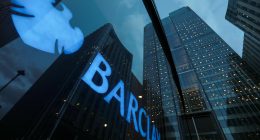One night in 1889, the Phaeton caught fire and drifted across the lagoon of a remote Indian Ocean atoll. “It was a barque, state of the art,” says Pete McCartney as he steers his Polycraft towards one of its exposed ribs. “You’ll see, there’s still wood on the wreck.”
I swim over the old ship. It had been carrying coconut oil from the atoll’s plantations, the fiefdom of a far-flung family of Scots who ruled the islands until the 1970s, when the UN suggested to the Australian government that their role was “feudal” and “anachronistic”.
Damselfish, wrasse and parrotfish cloud below me. I watch a bumphead as it chips away at coral that has formed on the spars. There’s a shout from Pete as two vast shadows pass to one side. Swimming out, I begin to follow the manta rays as they pulse through the blue.
Pete follows me and 20 minutes later I climb on to the boat and we look out over the lagoon. He compares the colour to a bottle of Bombay Sapphire gin. “It’s why I called my company Cocos Blue,” he says.


I’d guess Pete’s age at 37, but he turns out to be 65. There’s a touch of Shane Warne about him. He has two young children, and an older set too: “People ask if it’s better to have kids old or young,” he says. “I say either is good. Just don’t do both.”

Unless you have a yacht and a lot of time, or your own plane, the only way to the Cocos (Keeling) Islands is a twice-weekly Virgin flight out of Perth in Western Australia. Only about 4,000 tourists made it here in all of last year. Looking down as we bank in, I see a reef like old bones on top of an ancient volcano that plunges to the depths on every side.
The Cocos are relatively new — “there wouldn’t have been much here when Jesus was walking,” I’m told — but parrotfish have been busy since, pooing enough coral sand for 27 islands. They are home to an army of land crabs, an endangered population of lugubrious geckos and 593 idiosyncratic people.
We are 1,720 miles north-west of Perth and 660 miles south of Indonesia, as remote as a mariner’s fable.

West Island is home to a hotchpotch of Western Australians. Most are employed by the government, but 41 are like Pete, running private businesses. Home Island, across the lagoon, is home to 450, the vast majority who call themselves Cocos Malay. They are the Sunni descendants of indentured labourers brought in from Indonesia and Malaysia by a horror called Alexander Hare. He arrived in 1826 with a harem thinking he was going to have a fine old time.
Our plane lands and we are greeted by an Australian federal policeman, whose cushy job is telling the handful of tourists — there are only 144 guest beds on the islands — about the radios and first aid kits stored on the beaches.
Mike Kirkpatrick, chair of the tourist board and a ringer for Roy Scheider in Jaws, waits for me outside. He offers me a tour, driving the eight miles from one end of West Island to the other.



We travel a well maintained avenue of coconut palms, occasionally being assaulted by a view of endless blue. There is a kitesurfing shack, a (sort-of) secret military listening post, an old quarantine station, and the “spot”, where locals leave their surfboards opposite a break.
Further on there is Trannies Beach — “It’s named after the transmission station,” Mike says a touch too quickly — and a track called Heartbreak Drive leading to a pier where giant trevally are said to hunt on the full moon.
My room at Waves Oceanfront looks out on surf barrelling along the reef. The owners, Tim and Patricia, introduce me to the neighbours, who all run excursions. I meet Pete, then Kylie and Ash who flirt with each other while running a motorised canoe tour on the endless tidal flats (you get to see the lugubrious geckos).
I am taken to the “club” — the island’s bar — where I find Dieter Gerhard, who worked at the quarantine centre looking after elephants and ostriches on their way into Australia, but now runs the scuba. The booze is duty free.
Engines roar overhead, and everyone looks up. “The weekly cargo plane,” says Tim. “It’ll be crazy at the shop tomorrow. Everyone will be fighting over the fresh salad.”

The Cocos — it rhymes with hocus — were first spotted in 1609 but lay unpopulated until Hare, a friend of Stamford Raffles, arrived. He built his harem on Prison Island, but was soon pushed out by one of his former captains, a Shetland islander called John Clunies-Ross.
Clunies-Ross established coconut plantations. His labourers had to collect 500 coconuts a day to receive a wage in Cocos rupees, a currency of Clunies-Ross’s own making and redeemable only at the company store. Anyone who wanted to leave the islands was barred from returning.
The family prospered. They held Scottish country dances, imported deer to hunt, walked around shoeless in white suits, and often chose the names of newborns.
The atoll was protected, first by Britain, then by Australia, because of its strategic radio relay. In the first world war the German raider SMS Emden was sunk offshore by HMAS Sydney in the Australian navy’s first victory. During the second, a garrison of Sri Lankan soldiers mutinied. Later, a Japanese submarine shelled the Islands.
The Clunies-Ross’s high point came when Queen Elizabeth II visited in 1954. They kept their hold tight until the eyes of the UN’s decolonisation programme turned on them. Australia, whose dependency the islands had become, forced the family to sell for a not insignificant A$6.25mn in 1978.

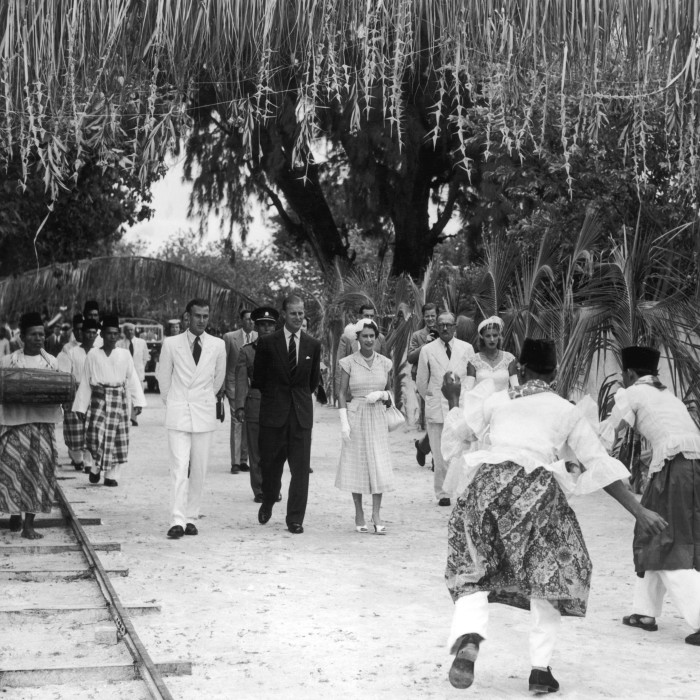
For a while the family kept its base at Oceania House, but the government refused to do business with its shipping company, bankrupting it. Now Johnny Clunies-Ross, the sixth generation, lives in a ramshackle house on West Island. He runs an exotic clam farm, selling his bivalves to aquaria around the world.
Sadly, he is off island for medical care, but Pete is his best friend, which I suspect means he’s all right. The islanders have a mixed view of the family. “It’s not 100 per cent,” says Haji Adams, Home Island’s imam. “But it is mainly those who live off the islands who don’t like them.”
I have met Adams after taking the spirit-soaring 20-minute ferry ride to Home Island across the lagoon. About 100 houses lie in a grid, with verandas and corrugated iron roofs.
I enter a garden of sea-almond trees. At its centre is Oceania House, clad in white tiles imported from Glasgow. Seyfi Seyit is waiting for me. A former cop from Melbourne, he and three partners recently bought the Clunies-Ross’s old base, in the hope of making it work as a culturally sensitive guest house.


“Home Island is where the cultural epicentre is,” he says. “It is where the original people who came out here are from and their descendants are still here, and they’ve maintained their culture and identity.”
Walking the alleys between people’s houses, I see sprawling backyards full of boats and golf buggies. People stop to chat. When I say I am Scottish, an old lady in an abaya does a Highland jig, while her husband praises the culinary qualities of shortbread.
It feels a touch uncomfortable, and I make the mistake of saying as much to Ossie Macrae, who offers tours of the island. “We don’t consider ourselves to have been slaves,” he says sharply, before offering up a superb lunch of curried jack, bonefish croquettes, and coconut crepes.
A landslide referendum in 1984 saw the islands fully integrate with Australia. A grateful Canberra now pours in money (did I say the atoll is strategic?). Haji Adams tells me that choice has made them a “very lucky community”.
Pregnant women are flown to Perth to give birth (Ossie’s 45-year-old wife is the last person born on the islands) and the children return to the mainland for further education. Periodic proposals to develop the islands — say with a resort — get voted down.
I bump into a New Zealander who has married a Home Islander and converted to Islam. What are the best and worst things about living here, I ask. “The community,” he replies. Best or worst? “Both.”



One morning on West Island my aged pick-up truck from Cocos Autos doesn’t start, so I walk over to the house of the owner, David O’Dowd. He barks at me that he hasn’t another, and I bark back, saying I wasn’t able to go fishing at 6am. He barks that I’m supposed to be working — there aren’t many secrets here — and I begin to laugh.
He invites me to a beach barbecue. While there, he invites me fishing on his boat. He might change my truck three times over the week, but he becomes my best pal on the Cocos.
The islanders make a point of drawing in visitors. Scroungers is an absurd round of golf straddling the runway, where each team has a local captain. There is a Hash House Harriers run, part of the global club, but here it seems more of a cheerful walk through the forest in search of beer.
I find I have to draw charts to work out where to eat. The restaurants — Saltmakers by the Sea, Salty’s Grill & Bakery, the Big Barge — seem to open and close at random. Soon I discover why: the same people — Amba, Holly and Imogen — work in them all.
Pizzas are made when the plane comes in, and can be delivered to the club or — astonishingly — on to the departing flight itself. There is an excellent Malay restaurant with a nightly buffet.
I soon realise I could live here. If you like the sea, say kite surfing, beachcombing, snorkelling, scuba or bird watching, you’d be happy too. I love fly-fishing and each morning I wade out on to miles of salt flat, chasing huge bonefish, triggerfish or giant trevally, often with reef sharks trailing me like gun-dogs.


Pete takes me out. The islands, he says, “appeal to people who want to go where there aren’t too many other people”. He’s been coming for 30 years, and lived here for 10.
He reveals he was engulfed by tragedy in 2022, his wife collapsing while walking on the beach. He starts to tell me he couldn’t do anything to save her but chokes, finally saying: “Being a single father at 65 is not what I expected.”
We are heading towards Direction Island. Its beach, Cossies, was voted the best in Australia in 2017. On its white sands I meet a doctor who brings his family every year. “We started coming for a week, now it’s a month,” he says. Seven large yachts lie offshore, two years into world tours.
I slide into “the rip”, a tidal current that carries me along the edge of a reef. It’s an underwater metropolis of trevally, red bass, sweetlip, reef shark, bonefish, maori wrasse, rabbitfish and turtles. I dive down to see coral trout lurking under plate coral and pass the “broccoli patch”, a vast outcrop of 400-year-old brain coral larger than any on the Great Barrier Reef.
Pete has followed and I pull myself back onboard. I’m still thinking about his wife, so I say the Cocos must be a wonderful place to raise children. He nods, and talks about how much time he gets to spend with them in this all but mythical world of tides and sun. “Yes,” he says. “We’re a team.”
Details
Ruaridh Nicoll was a guest of Cocos (Keeling) Islands Tourism Association (cocoskeelingislands.com.au) and Tourism Australia (australia.com). Double rooms at Waves Waterfront cost from A$345 (£180); see wavesaccommodationcocoskeelingislands.com. Cars from Cocos Auto are A$90 (£47) per day; see cocosautos.cc/shop. Virgin Australia (virginaustralia.com) flies twice a week from Perth, starting at £615 for a round trip. Pete McCartney’s Cocos Blue Charters (cocosblue.com.au) tour starts at A$200 per person
Find out about our latest stories first — follow FT Weekend on Instagram and X, and subscribe to our podcast Life & Art wherever you listen
Read More: World News | Entertainment News | Celeb News
FT

